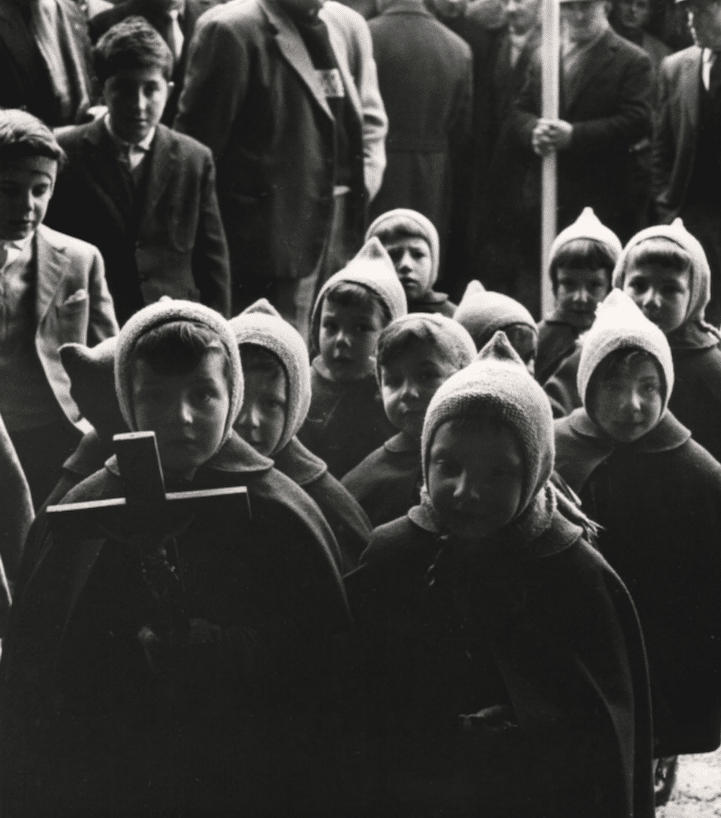
After the end of World War II and the downfall of dictator Benito Mussolini, a new movement was born in Italy: Neorealism, which realistically portrayed the desperate conditions of the poor and the working class after the war. While Neorealism was a film movement, the same gritty aesthetic and subject matter was captured in photographs from the same time period, as can be seen in the images that make up the exhibition Mid-Century Postwar Italian Photography on display at the Keith de Lellis Gallery in Manhattan until May 17.
Although the exhibition comprises of 34 gelatin silver prints by 27 different photographers, the similarities between the images are striking. They all share the same sense of graphic experimentation and spontaneity, as fleeting moments in time are captured by the camera. In several images, people are reduced to small, black figures lost in an abundance of negative space. In other photos, the lens zooms tightly in on street scenes, capturing the interactions between children, nuns, musicians, and other people. In all of the images, there is a strong awareness of place and time, effectively portraying the poverty, everyday life, social conditions, and love of the land that were prominent in postwar Italy.
The natural sense of reality depicted in this collection of photos was in reaction to fascism and the heroic, patriotic imagery of the past. Photographer Nino Migliori, who has two images in the show, says, “The common basis for us young people at that time who chose photography as a means of expression was the desire to break with the past aesthetics and to propose a new point of view.”
Above image: Bruno Rosso

Nino Migliori

Ferruccio Crovatto

Gianni Berengo Gardin

Nino Migliori

Zanardi Prospero


Mario Cattaneo

Mario Finocchiaro

Mario Finocchiaro

Ugo Zovetti

Franco Antonaci

Pepi Merisio

Gianni Ranati
Keith de Lellis Gallery Website
via [Juxtapoz], [New York Times]
